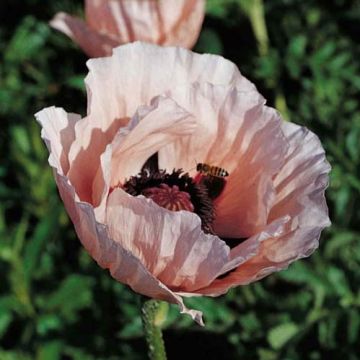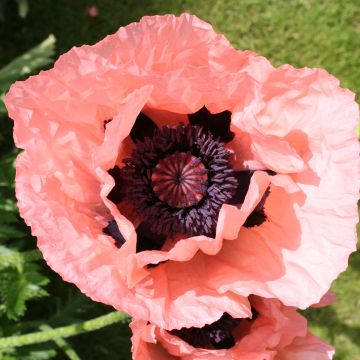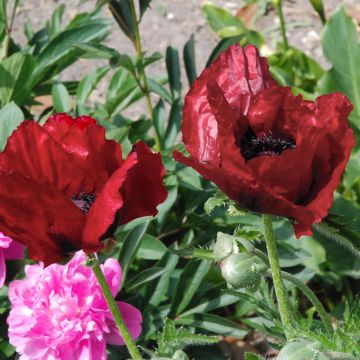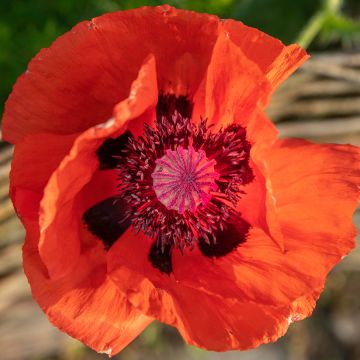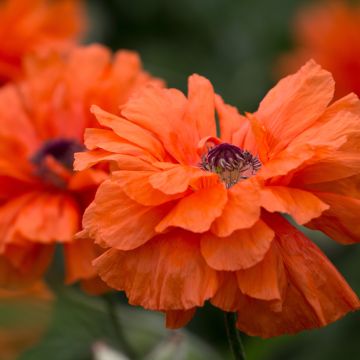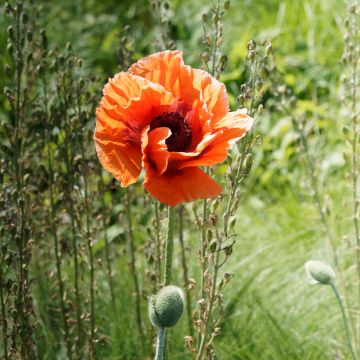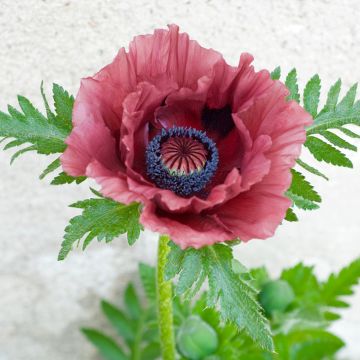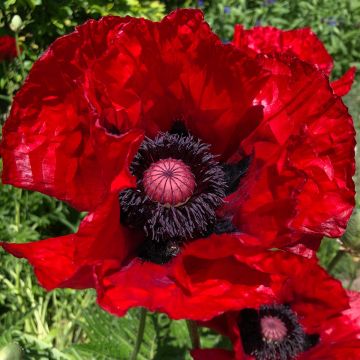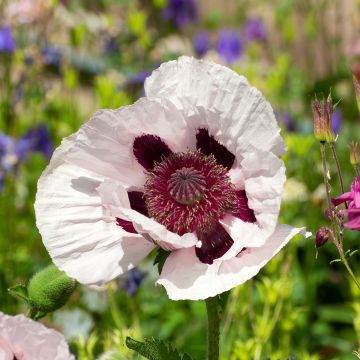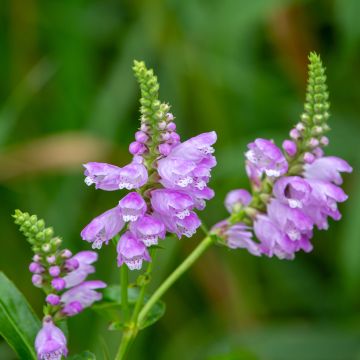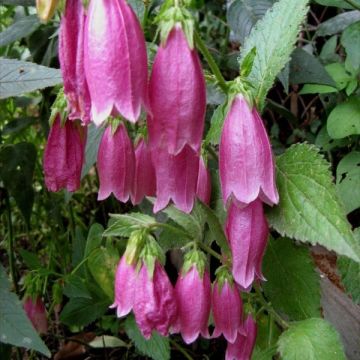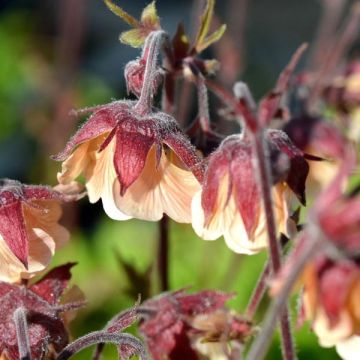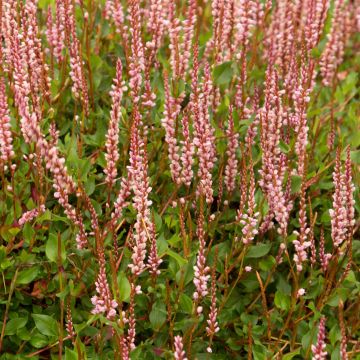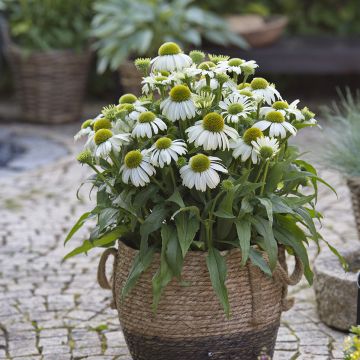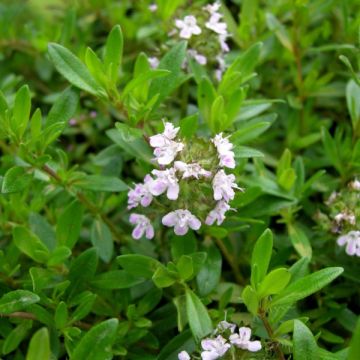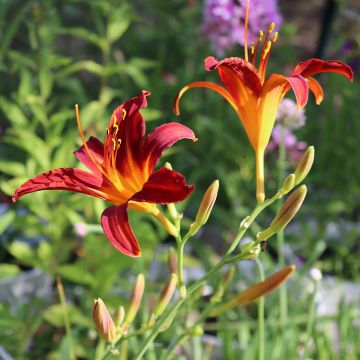Shipping country and language
Your country of residence may be:
Your country of residence is:
For a better user experience on our website, you can select:
Your shipping country:
-
Andorra
-
Austria
-
Belgium
-
Bulgaria
-
Canada
-
Chile
-
Croatia
-
Cyprus
-
Czechia
-
Denmark
-
Estonia
-
Finland
-
France
-
Germany
-
Greece
-
Hungary
-
Iceland
-
Ireland
-
Italy
-
Latvia
-
Lithuania
-
Luxembourg
-
Malta
-
Monaco
-
Netherlands
-
Poland
-
Portugal
-
Romania
-
Slovakia
-
Slovenia
-
Spain
-
Sweden
-
Switzerland
-
United Kingdom
We only deliver seed and bulb products to your country. If you add other products to your basket, they cannot be shipped.
Language:
-
French
-
German
-
Spanish
-
English
-
Italian
My Account
Hello
My wish lists
Log in / Register
Existing customer?
New customer?
Create an account to track your orders, access our customer service and, if you wish, make the most of our upcoming offers.
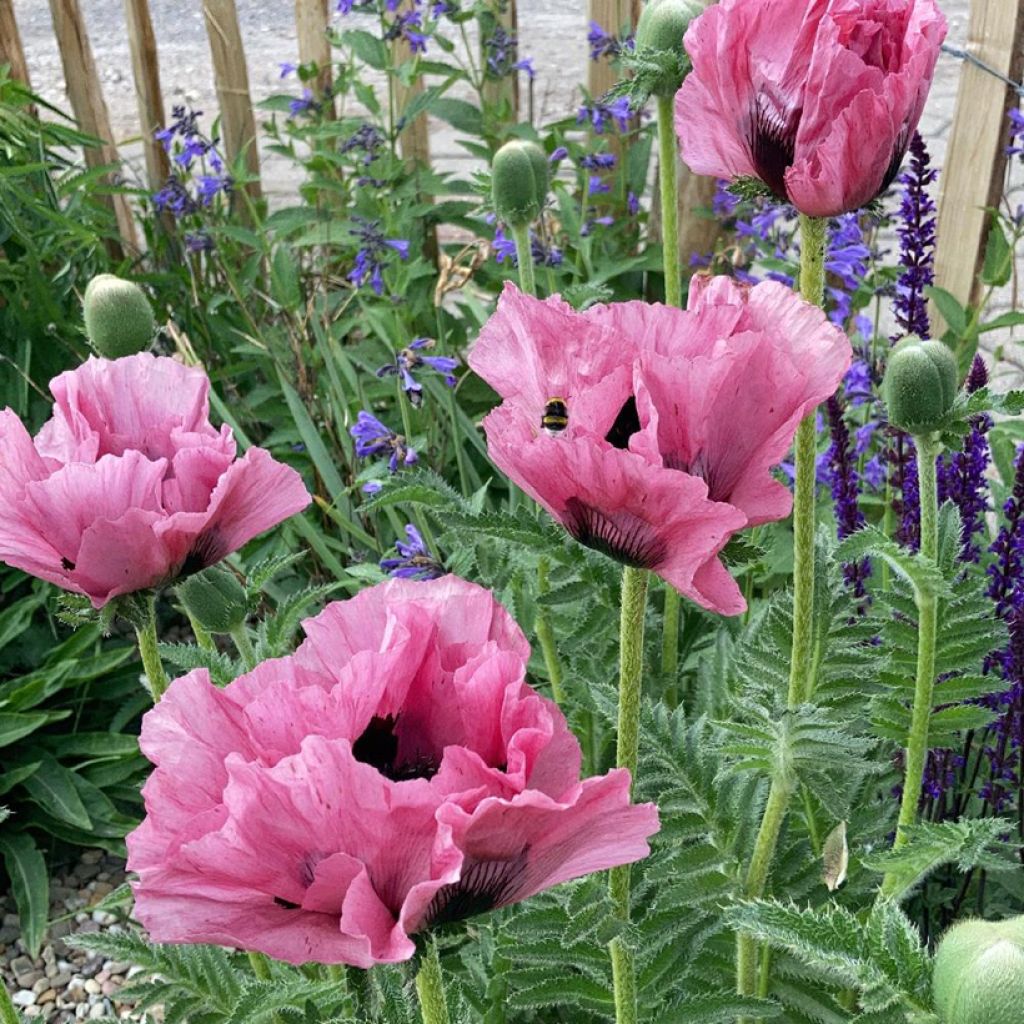

Oriental Poppy Pink Perfection - Papaver orientale
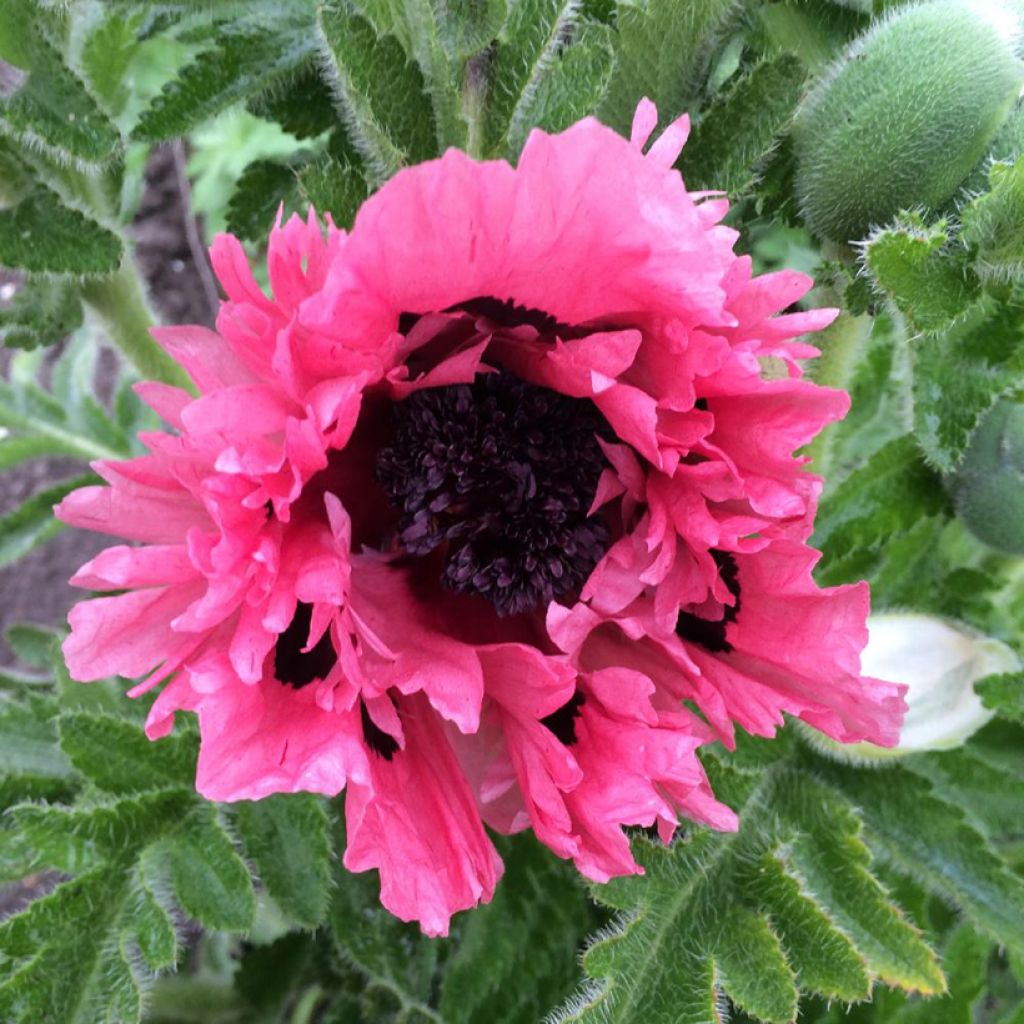

Oriental Poppy Pink Perfection - Papaver orientale
Oriental Poppy Pink Perfection - Papaver orientale
Papaver orientale Pink Perfection
Oriental poppy
Why not try an alternative variety in stock?
View all →Order in the next for dispatch today!
Dispatch by letter from €3.90.
Delivery charge from €5.90 Oversize package delivery charge from €6.90.
More information
This item is not available in your country.
Schedule delivery date,
and select date in basket
This plant carries a 12 months recovery warranty
More information
We guarantee the quality of our plants for a full growing cycle, and will replace at our expense any plant that fails to recover under normal climatic and planting conditions.
From €5.90 for pickup delivery and €6.90 for home delivery
Express home delivery from €8.90.
Does this plant fit my garden?
Set up your Plantfit profile →
Description
Papaver orientale 'Pink Perfection' is a variety of Oriental Poppy in search of the perfect pink. Its flowers unfold several layers of petals like tissue paper, in a gorgeous bright medium pink. To attract even more attention, the petals are very heavily fringed and the centre of the flowers is a deep reddish black. The foliage maintains a beautiful bright green throughout the season. It is a sturdy poppy that blooms in May and June, and if the soil is fertile and remains moist, the flowers reappear in September-October. This very perennial plant is easy to grow in all good garden soils, even limestone and dry in summer, in the sun, and its flowers picked in bud are superb in bouquets.
The 'Pink Perfection' Poppy is a horticultural selection. This plant is derived from Papaver orientale, a herbaceous perennial of the Papaveraceae family, native to Asia. This variety develops sturdy floral stems of 50 cm initially to reach 80 cm in height at maturity and forms a tuft of foliage thickening over the years. Flowering takes place in May-June, before the arrival of summer heat and dryness. Each hairy floral stem carries a single pendulous bud at its end, turning towards the sky to unfold a large flower 13 to 15 cm in diameter, composed of crumpled petals arranged in 2 rows. The flower remains open for a few hours before dropping its petals. Well-established plants produce several floral stems, ensuring flower renewal for about 3 weeks. After flowering, the foliage tends to disappear, to make room in autumn for a small basal rosette, characteristic of adaptation to high temperatures and summer drought. The foliage consists of large rough, cut, medium green leaves covered with hairs that give them a very decorative sheen. The fleshy deep roots of this Oriental poppy do not transplant well, especially in adult plants.
Oriental poppies fit well in elegant flower beds as well as in cottage gardens or rustic compositions. Their foliage forms a luxuriant tuft that stands out in flower beds. The 'Pink Perfection' variety pairs beautifully with the tall stems of white lupins ('West Country Polar Princess white') or pink ('La Chatelaine Rose'), as well as with the silvery foliage of Stachys byzantina, lavenders, daisies, and thistles. They also elegantly accompany border roses, love-in-a-mist, and cosmos, to create a gentle summer atmosphere. When designing your flower bed, keep in mind that the foliage of this poppy disappears during the summer.
Report an error about the product description
Oriental Poppy Pink Perfection - Papaver orientale in pictures


Flowering
Foliage
Plant habit
Botanical data
Papaver
orientale
Pink Perfection
Papaveraceae
Oriental poppy
Cultivar or hybrid
Other Oriental Poppies (Papaver orientale)
Planting and care
Although preferring a light and moist soil, Oriental Poppies Pink Perfection also thrive in dry and gravelly, limestone, or heavy and clayey, damp soil, as long as it is not waterlogged in winter. Another aspect of this poppy: its foliage disappears shortly after flowering, but if faded inflorescences are cut early, new shoots emerge in late summer, thus filling the gap for the end of the season. Cut back faded flower stems and clean up old foliage during summer, but be careful! Wear gloves, as the white latex secreted by the plant is toxic and can cause serious burns if it comes into contact with the eyes!
Planting period
Intended location
Care
This item has not been reviewed yet - be the first to leave a review about it.
Summer flowering perennials
Haven't found what you were looking for?
Hardiness is the lowest winter temperature a plant can endure without suffering serious damage or even dying. However, hardiness is affected by location (a sheltered area, such as a patio), protection (winter cover) and soil type (hardiness is improved by well-drained soil).

Photo Sharing Terms & Conditions
In order to encourage gardeners to interact and share their experiences, Promesse de fleurs offers various media enabling content to be uploaded onto its Site - in particular via the ‘Photo sharing’ module.
The User agrees to refrain from:
- Posting any content that is illegal, prejudicial, insulting, racist, inciteful to hatred, revisionist, contrary to public decency, that infringes on privacy or on the privacy rights of third parties, in particular the publicity rights of persons and goods, intellectual property rights, or the right to privacy.
- Submitting content on behalf of a third party;
- Impersonate the identity of a third party and/or publish any personal information about a third party;
In general, the User undertakes to refrain from any unethical behaviour.
All Content (in particular text, comments, files, images, photos, videos, creative works, etc.), which may be subject to property or intellectual property rights, image or other private rights, shall remain the property of the User, subject to the limited rights granted by the terms of the licence granted by Promesse de fleurs as stated below. Users are at liberty to publish or not to publish such Content on the Site, notably via the ‘Photo Sharing’ facility, and accept that this Content shall be made public and freely accessible, notably on the Internet.
Users further acknowledge, undertake to have ,and guarantee that they hold all necessary rights and permissions to publish such material on the Site, in particular with regard to the legislation in force pertaining to any privacy, property, intellectual property, image, or contractual rights, or rights of any other nature. By publishing such Content on the Site, Users acknowledge accepting full liability as publishers of the Content within the meaning of the law, and grant Promesse de fleurs, free of charge, an inclusive, worldwide licence for the said Content for the entire duration of its publication, including all reproduction, representation, up/downloading, displaying, performing, transmission, and storage rights.
Users also grant permission for their name to be linked to the Content and accept that this link may not always be made available.
By engaging in posting material, Users consent to their Content becoming automatically accessible on the Internet, in particular on other sites and/or blogs and/or web pages of the Promesse de fleurs site, including in particular social pages and the Promesse de fleurs catalogue.
Users may secure the removal of entrusted content free of charge by issuing a simple request via our contact form.
The flowering period indicated on our website applies to countries and regions located in USDA zone 8 (France, the United Kingdom, Ireland, the Netherlands, etc.)
It will vary according to where you live:
- In zones 9 to 10 (Italy, Spain, Greece, etc.), flowering will occur about 2 to 4 weeks earlier.
- In zones 6 to 7 (Germany, Poland, Slovenia, and lower mountainous regions), flowering will be delayed by 2 to 3 weeks.
- In zone 5 (Central Europe, Scandinavia), blooming will be delayed by 3 to 5 weeks.
In temperate climates, pruning of spring-flowering shrubs (forsythia, spireas, etc.) should be done just after flowering.
Pruning of summer-flowering shrubs (Indian Lilac, Perovskia, etc.) can be done in winter or spring.
In cold regions as well as with frost-sensitive plants, avoid pruning too early when severe frosts may still occur.
The planting period indicated on our website applies to countries and regions located in USDA zone 8 (France, United Kingdom, Ireland, Netherlands).
It will vary according to where you live:
- In Mediterranean zones (Marseille, Madrid, Milan, etc.), autumn and winter are the best planting periods.
- In continental zones (Strasbourg, Munich, Vienna, etc.), delay planting by 2 to 3 weeks in spring and bring it forward by 2 to 4 weeks in autumn.
- In mountainous regions (the Alps, Pyrenees, Carpathians, etc.), it is best to plant in late spring (May-June) or late summer (August-September).
The harvesting period indicated on our website applies to countries and regions in USDA zone 8 (France, England, Ireland, the Netherlands).
In colder areas (Scandinavia, Poland, Austria...) fruit and vegetable harvests are likely to be delayed by 3-4 weeks.
In warmer areas (Italy, Spain, Greece, etc.), harvesting will probably take place earlier, depending on weather conditions.
The sowing periods indicated on our website apply to countries and regions within USDA Zone 8 (France, UK, Ireland, Netherlands).
In colder areas (Scandinavia, Poland, Austria...), delay any outdoor sowing by 3-4 weeks, or sow under glass.
In warmer climes (Italy, Spain, Greece, etc.), bring outdoor sowing forward by a few weeks.
